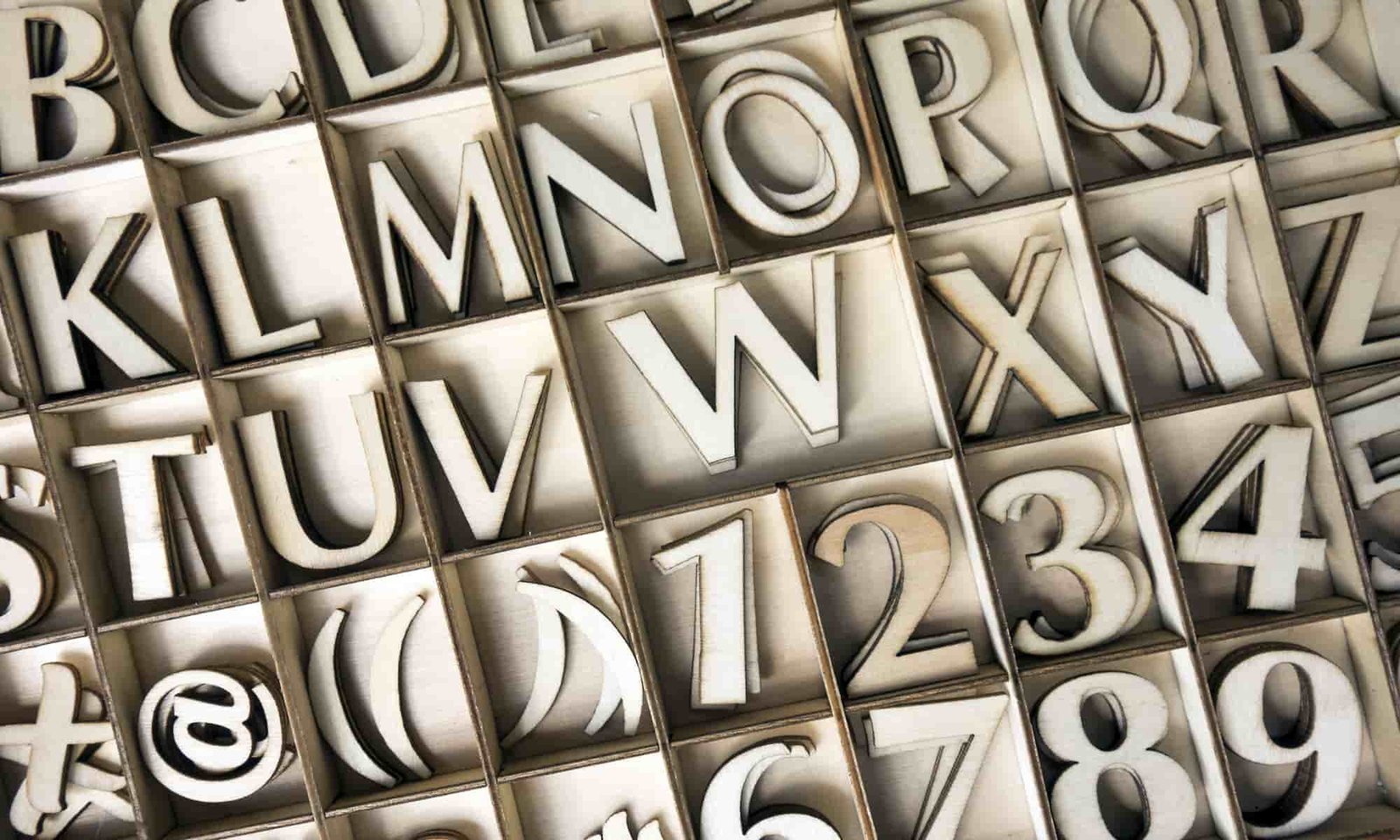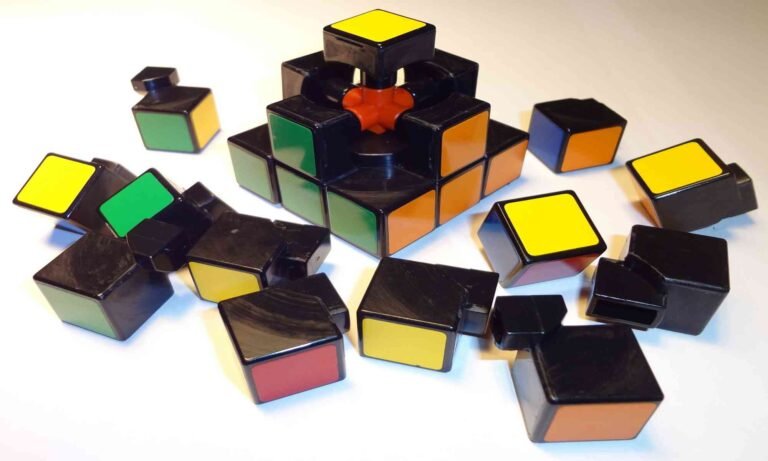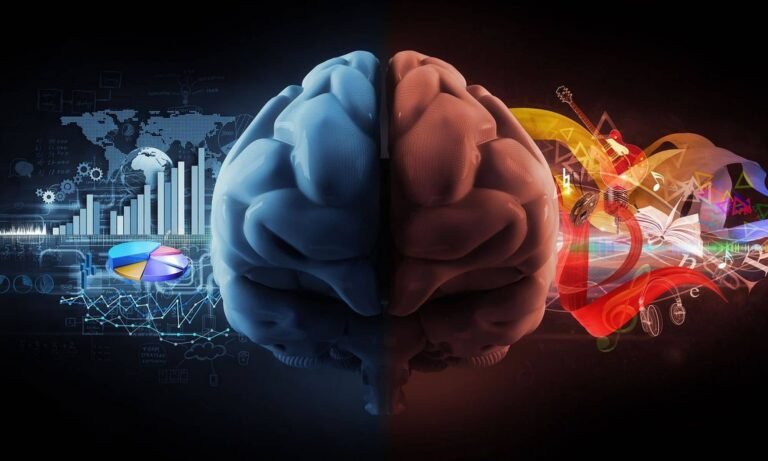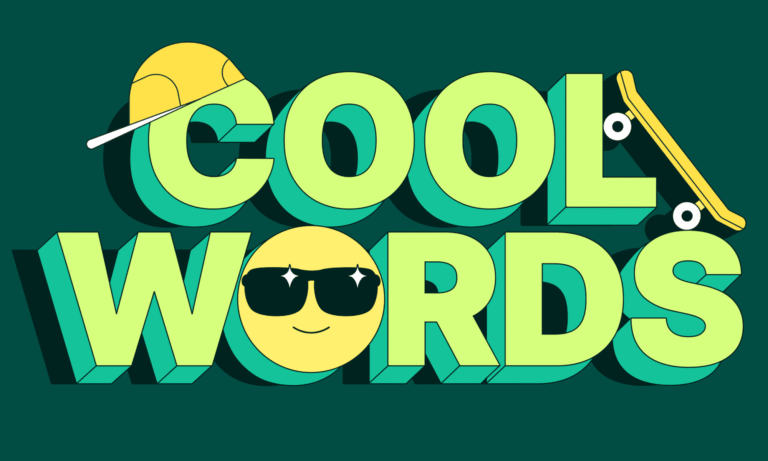AlphanumERIC (sometimes seen as alphamERIC) is a combination of alphabetic and numERIC characters, and is used to describe the collection of Latin letters and Arabic digits or a text constructed from this collection.
In layouts designed for English language users, alphanumeric characters are those comprised of the combined set of the 26 alphabetic characters, A to Z…
Alfa, Bravo, Charlie, Delta, Echo, Foxtrot, Golf, Hotel, India, Juliett, Kilo, Lima, Mike, November, Oscar, Papa, Quebec, Romeo, Sierra, Tango, Uniform, Victor, Whiskey, X-ray, Yankee, Zulu
…and the 10 Arabic numerals, 0 to 9.
Go decrypt this Encrypted number code. Click “Copy Me” and bring it along to Decrypt by pasting it into “Your Message”. Of course, the operating mode, you choose would be “Decrypt“.
The Challenge
Watch the AlphanumERIC Challenge and analyze what is and isn’t possible in combination.
In this alphanumERIC, the sum of two two-digit numbers is also a two-digit number:
- If A, B and C are distinct digits (A≠B≠C), how many distinct ordered tripples (A,B,C) are there that satisfy this equation: AB+AB=CC?
The Bases
Depending on the alphanumERIC base (e.g. the Scrabble letter distributions, a simple Keypad or even simplier, the English alphabet) one chooses, the name ERIC results in the number total of either 6, 7 or 8:
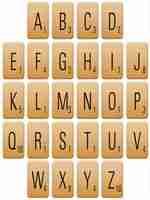
ERIC = 1 1 1 3
→ 1+1+1+3 = 6
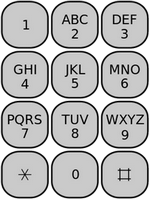
ERIC = 3 7 4 2
→ 3+7+4+2 = 16
→ 1+6 = 7
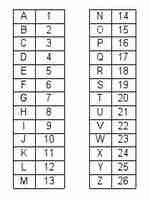
ERIC = 5 18 9 3
→ 5+18+9+3 = 35
→ 3+5 = 8
Of course, in Numerology, these numbers do have a meaning. Find out more about it in my Kudos Archive (the term Endorsemonial does not exist – I just made it up and it’s a playful word combination of Endorsement and Testimonial)
Interface Subsets
When a string of mixed alphabets and numerals is presented for human interpretation, ambiguities arise. The most obvious is the similarity of the letters I, O and Q to the numbers 1 and 0. Therefore, depending on the application, various subsets of the alphanumeric were adopted to avoid misinterpretation by humans.
- In passenger aircrafts, aircraft seat maps were designated by row number followed by column letter. For wide bodied jets, the seats can be 10 across, labeled ABC-DEFG-HJK. The letter I is skipped to avoid confusion with row number 1.
- In vehicle identification numbers used by motor vehicle manufacturers, the letters I, O and Q are omitted for their similarity to 1 or 0.
- Tiny embossed letters are used to label pins on an electrical connectors. The letters I, O, Q, S and Z were dropped to ease eye strain with 1, 0, 5, 3,and 2. That subset is named the DEC Alphabet after the company that first used it.
- For alphanumerics that are frequently handwritten, in addition to I and O, V is avoided because it looks like U in cursive, and Z for its similarity to 2.
The Binary Code
A code that uses just 2 symbols to represent information is considered binary code.
Different versions have been around for centuries and used in a variety of contexts.
Perhaps the most common use for binary nowadays is in computers: Binary code is the way that most computers and computerized devices ultimately send, receive and store information.
Morse Code
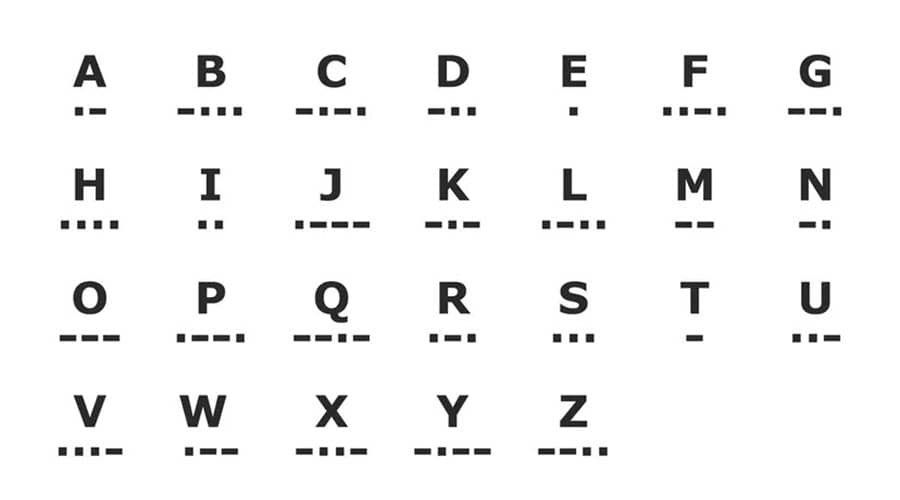
The Morse Code (see Chart of the Morse Code 26 Letters and 10 Numerals) was developed by Samuel Morse in the 1800s when he worked with an electrical telegraph system sending pulses of electric current and an electromagnet. His code used the pulse and breaks between them to transmit information. Popular with amateur radio operators, this code is no longer required if you want to get a U.S. pilots or air traffic controller license, though these individuals often have a basic understanding of the code.
An observer can understand Morse code without special equipment which can be an advantage in, for example, an emergency situation. This code can also be useful when poor signal conditions exist, and the human voice is difficult to decode. While this code covers the basic Latin alphabet and Arabic numerals, extensions to the code cover languages that use more than the Latin alphabet letters.
Try this: A Morse Code Translator
Braille Alphabet
Braille is a system of raised dots that can be read with the fingers by people who are blind or who have low vision.
Braille is not a language. Rather, it is a code by which many languages may be written and read.
Braille is used by thousands of people all over the world in their native languages and provides a means of literacy for all.
Try this: A Braille Alphabet Translator
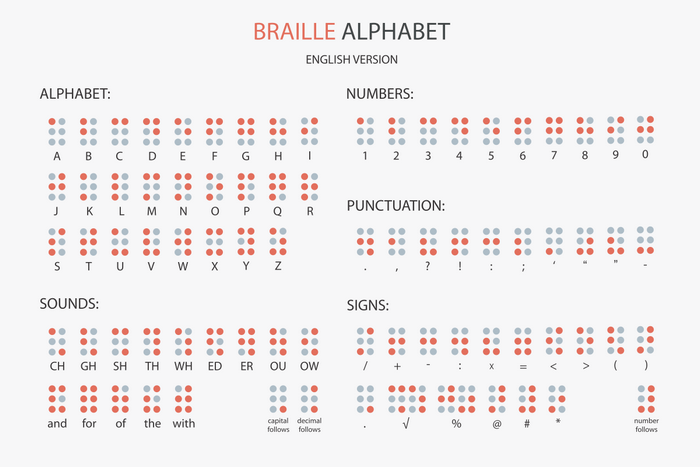
Braille symbols are formed within units of space known as braille cells, each consisting of six raised dots arranged in two parallel rows of three. The dot positions are numbered from one to six, allowing for sixty-four combinations. A single cell can represent a letter, number, punctuation mark, or even a whole word.
Louis Braille, born in Coupvray, France, on January 4, 1809, attended the National Institute for Blind Youth in Paris. At that time, books were created using raised print, which was laborious to produce and hard to read. While at the Institute, Braille sought to create an alphabet easy to read with fingertips. At age fifteen, he invented the braille system, evolving it from Charles Barbier‘s tactile “Ecriture Nocturne” code for reading military messages in the dark.
What’s More
The posts in My Blog feature reflective, story-driven pieces rooted in personal and societal insights.
The topics in My Interests explore abstract, philosophical ideas and their cultural and societal impact.


